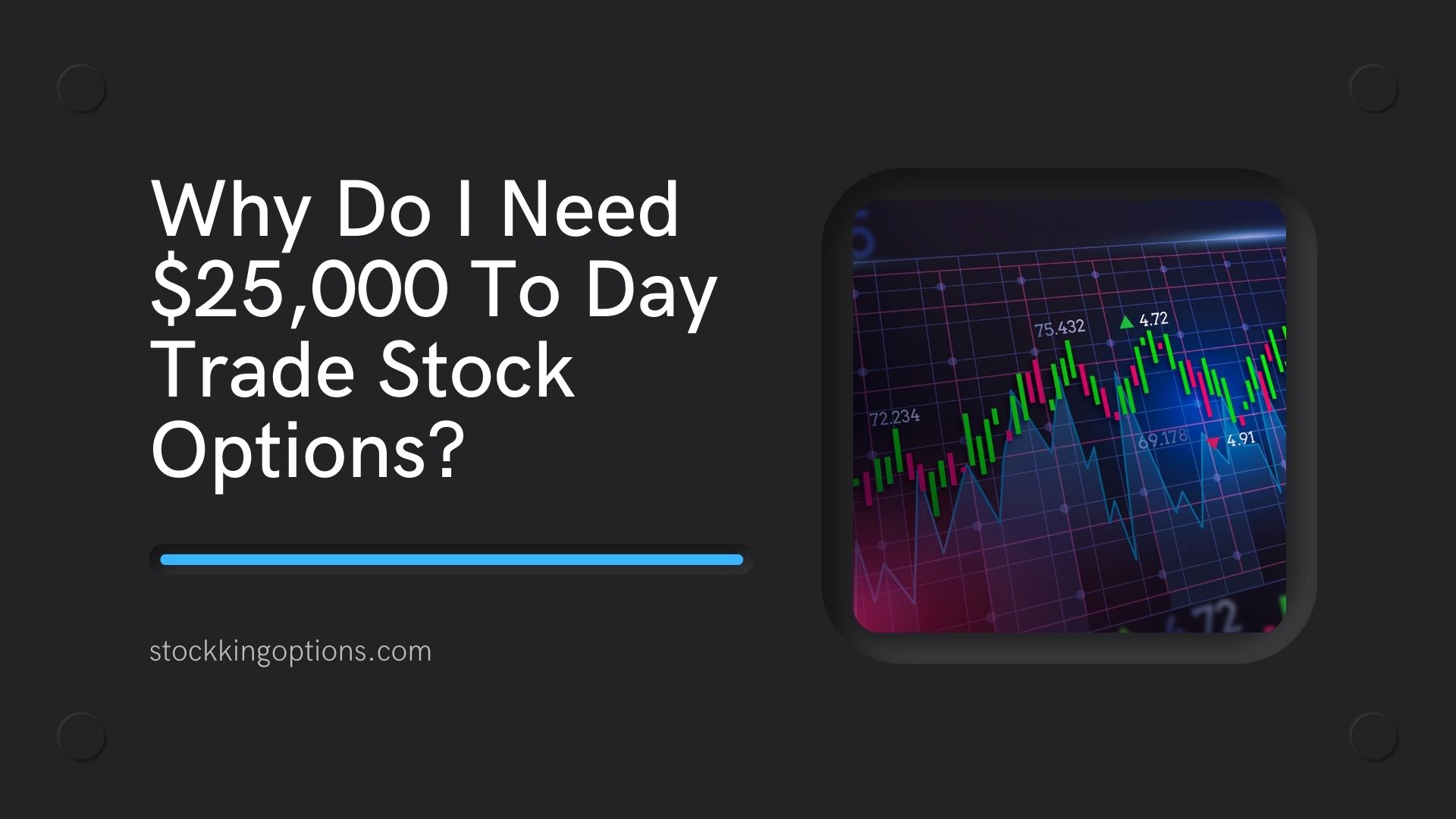
Key Takeaway: The $25,000 requirement for day trading stock options is mandated by the Pattern Day Trading Rule. This regulation aims to protect traders by imposing minimum capital requirements.
Curious about the $25,000 requirement for day trading stock options? It’s mandated by the Pattern Day Trading Rule, ensuring traders have sufficient capital to mitigate risks. This regulation aims to protect inexperienced traders from excessive losses. Understanding these requirements is crucial for aspiring day traders.
Understanding the Pattern Day Trading Rule
Understanding the Pattern Day Trading Rule is essential for anyone looking to engage in day trading in the stock market. This rule was implemented by the U.S. Securities and Exchange Commission (SEC) to protect small investors and ensure safe and fair trading practices.
The pattern day trading rule states that an individual must maintain a minimum account balance of $25,000 in order to engage in more than three-day trades within a five business day period. A day trade is defined as buying and selling or shorting and covering the same security on the same day.
This rule was put in place because day trading involves high-risk, short-term strategies which can lead to large losses if not done correctly. The SEC believed that individuals who do not have enough funds in their account may be more likely to take on excessive risks, leading to potential financial ruin.
It’s important to note that this rule only applies to margin accounts – accounts where an investor borrows money from a broker to make trades. If you are using a cash account, then you are not subject to this rule as you are limited by the amount of available cash rather than borrowing capacity.
To understand how this rule works, let’s look at an example. Say you have $20,000 deposited into your margin account and your first day trade results in a loss of $2,000. You now have $18,000 left in your account which exceeds the $25,000 minimum required for further day trading activities.
However, if you were to execute three consecutive losing trades resulting in an overall loss greater than $5,000 (less than $15,000 remaining), then you would fall below the required minimum and receive a margin call from your broker requiring additional funds or securities be deposited into your account immediately.
Furthermore, it’s worth noting that once someone has been deemed a “pattern day trader,” they must maintain this minimum balance at all times regardless of whether they’re actively engaged in day trading or not. Unfortunately, this can be a barrier for many potential day traders who may not have the necessary funds to meet this requirement.
Understanding the Pattern Day Trading Rule is crucial prior to engaging in day trading activities. It’s important to carefully consider your available funds and account type before embarking on a high-risk trading strategy. As always, it’s best to consult with a financial advisor before making any significant investment decisions.
Regulatory Requirements and Broker Policies
In order to successfully day trade, it is important to understand the regulatory requirements and broker policies that govern this type of trading activity. These rules and guidelines ensure a fair and transparent market for all traders, and also protect investors from potential risks.
One of the main regulatory requirements for day trading is the pattern day trader (PDT) rule enforced by the U.S. Securities and Exchange Commission (SEC). This rule states that any trader who executes four or more round-trip trades within a 5-day period must maintain a minimum account balance of $25,000 in their brokerage account. This requirement applies to both margin and cash accounts. If a trader falls below this threshold, they may be restricted from placing further day trades until their account meets the minimum balance.
Another important regulatory aspect is margin trading, which allows traders to borrow money from their brokerage firm to leverage their positions in the market. However, there are strict regulations in place regarding margin trading, as it can significantly increase risk exposure for traders. The Federal Reserve Board’s Regulation T requires traders to have at least $2,000 or 100% of the purchase price available as collateral when engaging in margin buying.
Additionally, brokers have their own set of policies and procedures that dictate how clients can trade on their platform. These policies may include limitations on specific types of securities or certain timeframes for executing trades. It is crucial for traders to thoroughly review these policies before starting to day trade with a particular broker.
Furthermore, some brokers may require additional funds in an account before allowing clients to engage in high-risk activities such as short selling or options trading. Short selling involves borrowing shares from a broker and then selling them immediately with hopes of buying them back at a lower price later on – effectively betting against the stock’s performance. Options trading can also lead to significant losses if not executed properly.
It is essential for day traders to stay up-to-date on changes in regulations and broker policies in order to avoid any potential violations or restrictions. Violating these rules can result in hefty fines, account closures, or even legal action. Therefore, it is crucial for traders to always be aware of the regulatory requirements and broker policies that govern their trading activities.
Risk Management Implications
Risk management is a crucial aspect of any trading activity, and day trading is no exception. In fact, due to the fast-paced nature of day trading and the potential for large gains or losses within a short period of time, risk management becomes even more critical.
The first risk management implication of day trading is the potential for losing all your capital. Day traders use leverage to make trades with larger positions than what their account balance allows. While leverage can amplify profits, it also increases the risk of significant losses. It is not uncommon for beginner day traders to lose all their capital in one trade due to not having proper risk management strategies in place.
To mitigate this risk, day traders should never invest more than they can afford to lose. It is vital to have a set amount of capital designated specifically for day trading and not using funds allocated for other financial obligations.
Another risk associated with day trading is market volatility. The stock market can experience sudden and drastic price movements that can be difficult to predict or control. Moreover, because day traders often hold positions only for a short period, they are more susceptible to these volatile price swings.
One way to manage this risk is through diversification – spreading investments across various industries or asset classes rather than focusing on a single stock or sector. Diversification helps limit the impact of any single trade on overall portfolio performance.
Furthermore, it is essential to have an exit strategy in place when entering each trade. This means setting stop-loss orders that automatically trigger when a trade reaches a predetermined loss limit. Stop-loss orders allow traders to cut their losses before they become too significant and protect against market volatility.
Additionally, another important consideration when managing risks in day trading is maintaining emotional discipline. Trading decisions based on emotions such as greed or fear can lead to impulsive actions that may result in substantial losses.
Day traders must stick to their predetermined strategies and avoid making impulsive decisions based on emotions. They should also continuously monitor their mental state and take breaks if necessary to prevent fatigue and maintain a clear mindset while trading.
Day trading carries significant risks that can result in substantial losses. However, with proper risk management strategies in place such as having dedicated capital for trading, diversification, setting stop-loss orders, and maintaining emotional discipline, the risks can be minimized. It is crucial for day traders to understand these implications and consistently implement risk management techniques to become successful in this high-risk but potentially rewarding field of trading.




